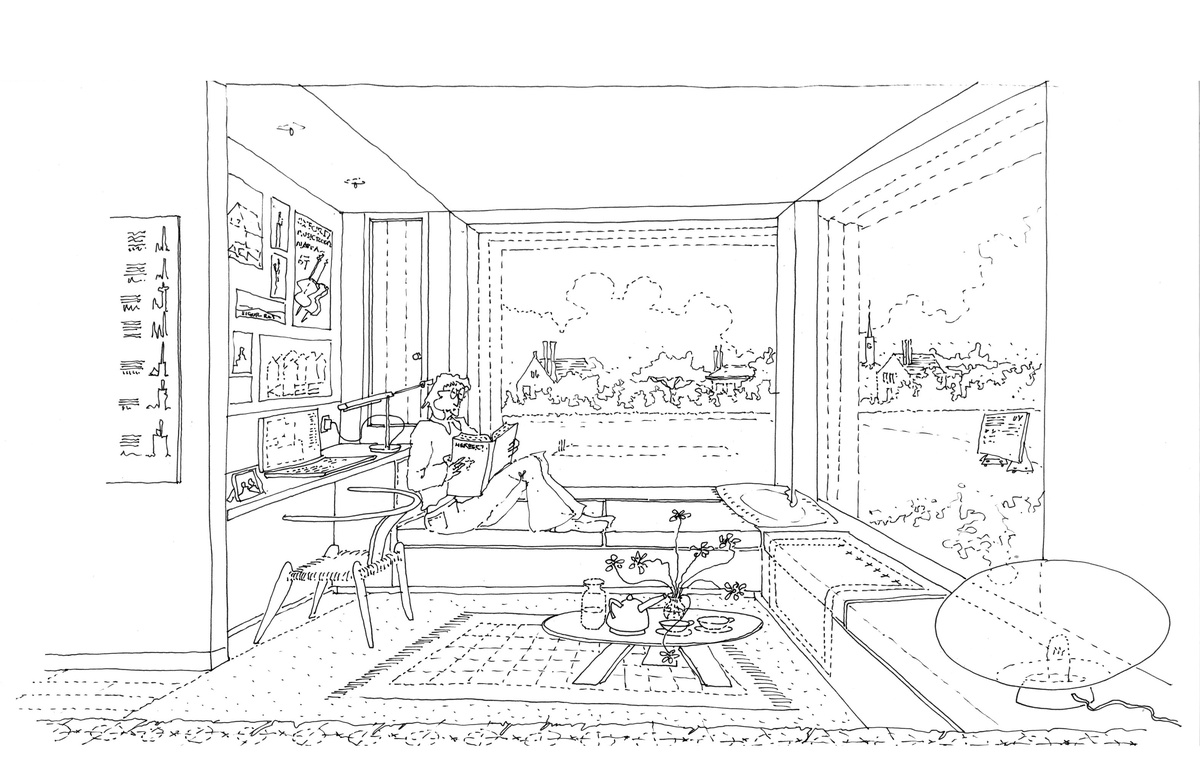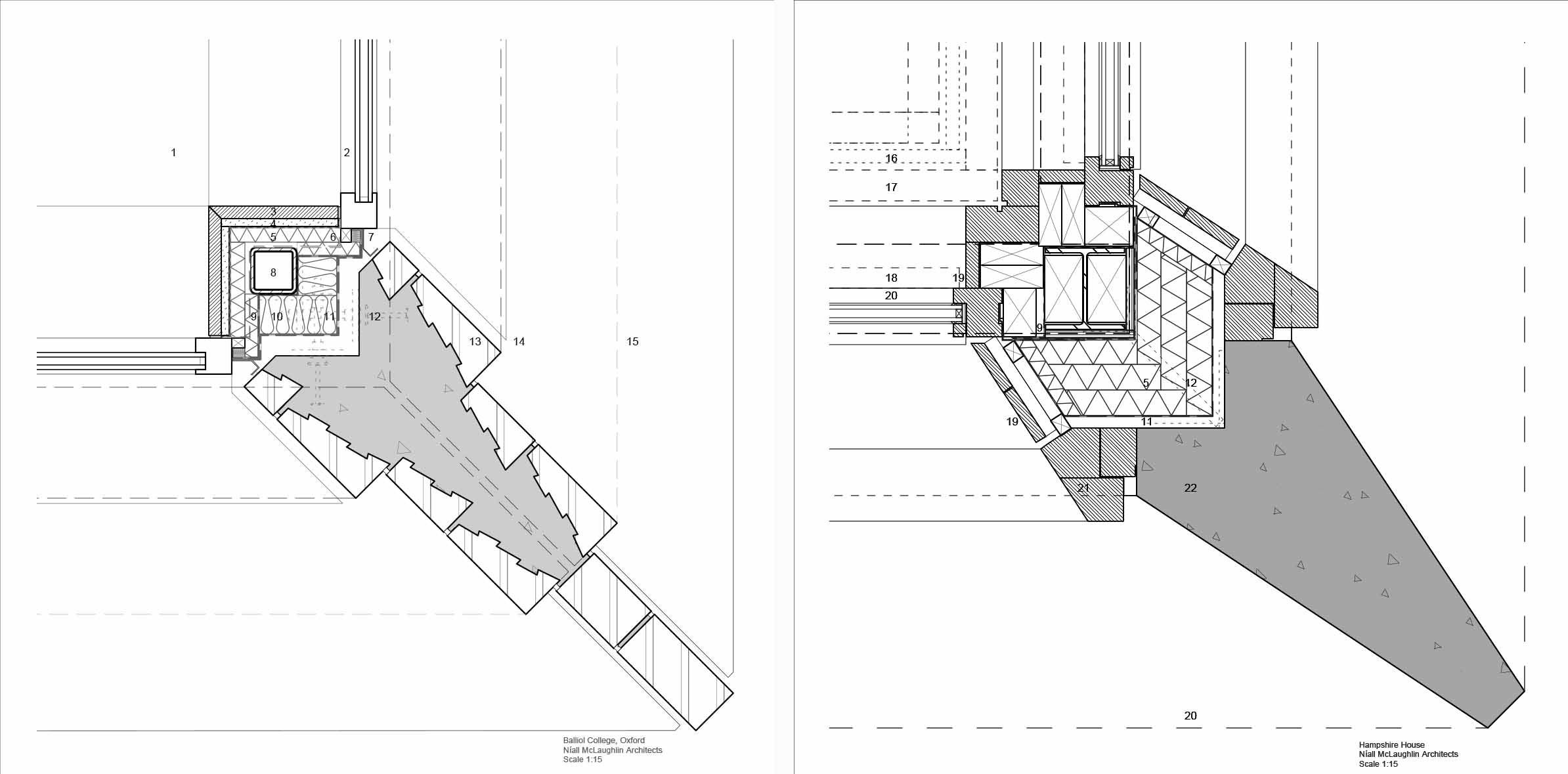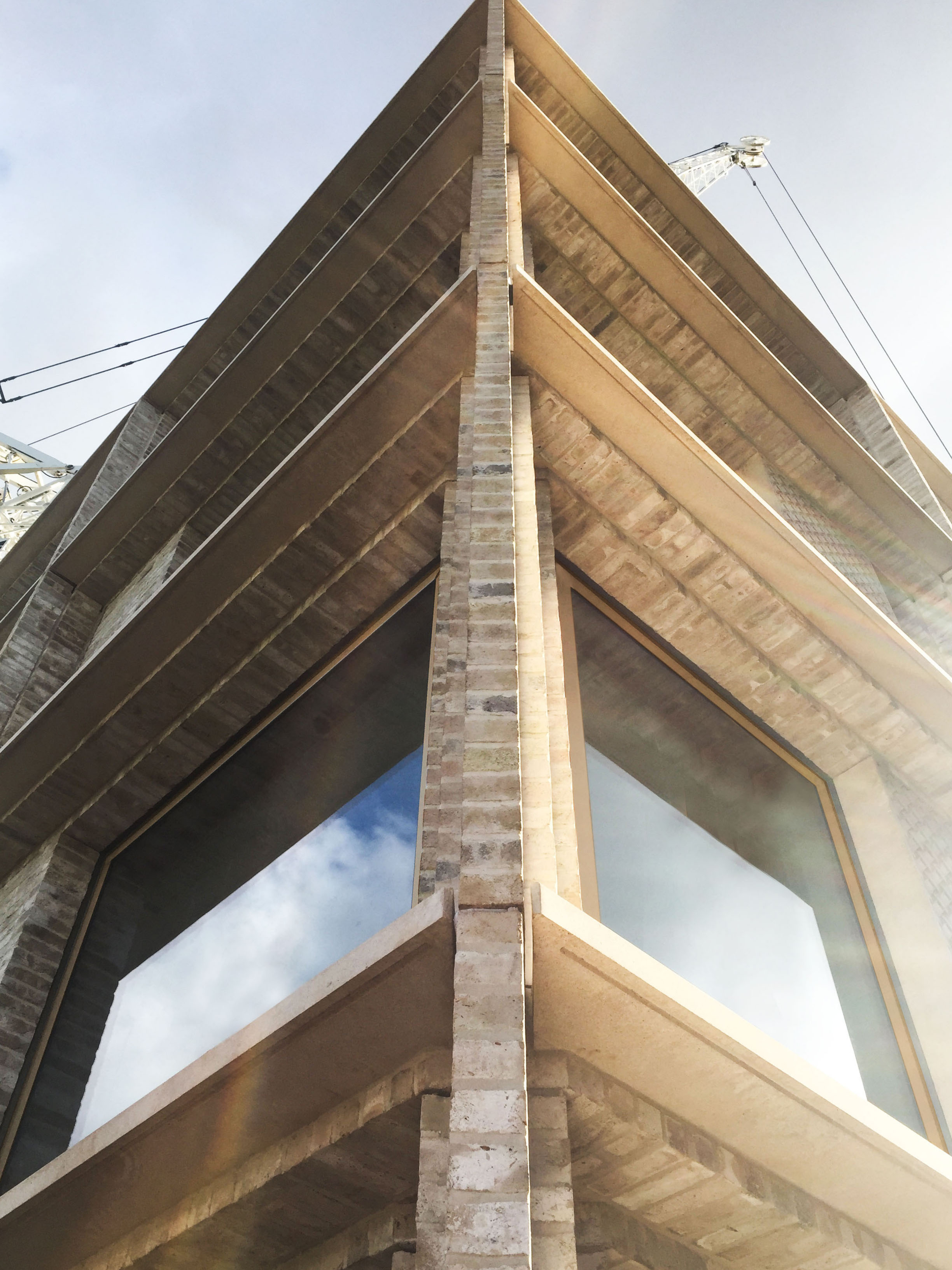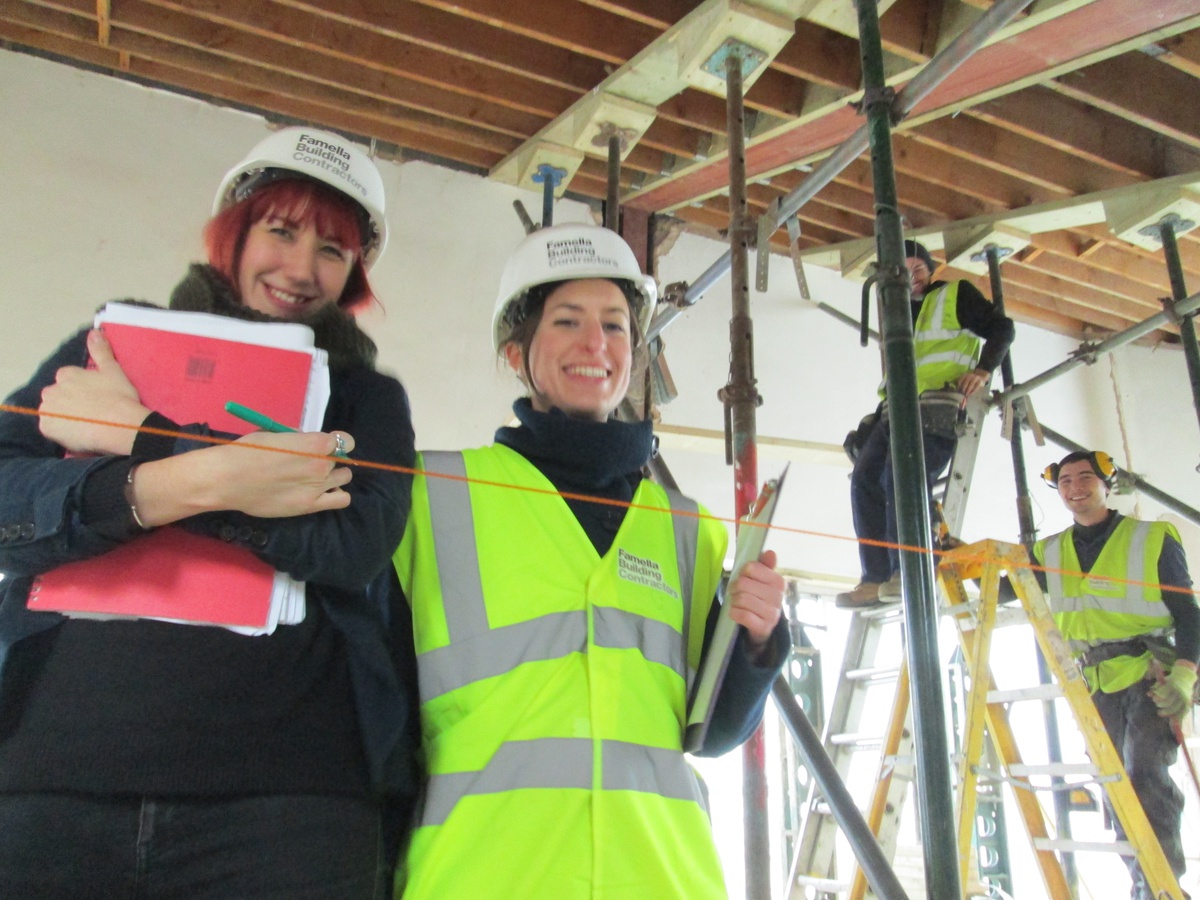MASTER’S FIELD PROJECT
APRIL 2019

When reflecting on the work of our practice, the chamfered corner, is a recurring interest. This detail has developed over the years from our preoccupations with the Miesian re-entrant corner, the simplicity of a trabeated structure, and a desire to find ways of expressing a deep façade.
Simple chamfers in concrete and stone were employed in recent completed projects for Hampshire House and The Sultan Nazrin Shah Centre, Oxford. At the Master’s Field site in Oxford, currently under construction for Balliol College, a corbelled chamfered detail is incorporated in a load bearing façade. This project comprises eight student accommodation buildings and a pavilion arranged around a series of courtyards overlooking a cricket pitch.

A brick-clad chamfer at the corner between two windows is used throughout the accommodation buildings. This establishes a shifting perspectival relationship as one moves through the site, and gives all the buildings a common language. Corbelled brick and concrete lintels and mullions set up a trabeated structural rhythm which clearly defines each individual student bedroom and creates a delicate play of light and shadow across the façade. A series of finely detailed brick and concrete panels are layered within the depth of the window reveal, articulating a secondary rhythm which expresses the transition from solid to glazed elements.
The detail enables the depth and structure of the wall to be elegantly expressed, maximizing its presence when viewed externally and minimizing its presence internally. It also forms a generous threshold which provides privacy for students inside engrossed in their study. For moments of welcome distraction, the large picture windows frame uninterrupted views over the cricket pitch and across the campus.
The expression of a chamfered corner produces challenges in construction, particularly when expressed in precast concrete components clad in corbelled brickwork. When forming acute angles with orthogonal bricks, special consideration must be given to alignments and bonding. Interface details demand careful thought regarding sequencing and tolerances to achieve a symbiosis of structural performance with aesthetic ambition.
Externally, in the plan detail shown here, the apex of the chamfer is formed from stacked brick headers. This exposes three faces of each brick, limiting the choice of bricks, which are typically produced with only one finished stretcher face. Brick specials are required to form the chamfered corbel of the lintels, and grids are carefully set out to ensure alignment of vertical and horizontal corbelling. We looked to the meticulously detailed and crafted brickwork of Jensen-Klint’s masterpiece, Grundvig’s Church in Copenhagen, for expression of stepped vertical forms.
Internally, minimising the corner where the windows meet produces intricate challenges in the alignment of linings, blinds, reveals and fitted furniture. This complex resolution of constituent parts all work hard to achieve the aesthetic objective of the simple glazed chamfered corner.

Detail Key
1.Whitewashed ply bench 2. Aluminium window 3.Whitewashed plywood reveal 4.Plasterboard 5.Rigid insulation 6.Steel window fixing brackets 7.Metal pressing 8.Wind post 9.EPDM/ vapour barrier 10.Mineral wool insulation 11.Breather membrane 12.Steel restraint brackets 13.Corbelled brick faced precast concrete mullion 14.Flashing 15.Concrete cill 16.Concealed curtain track 17.Oak joist over 18.Concealed roller blind 19.Timber panels 20.Timber framed window 21.Prelaminated timber frame 22.Precast concrete mullion 23.Precast concrete coping over
THE ELEMENT OF SURPRISE
NOVEMBER 2014

Sarah-Jane McGee, Project Architect (Right) and and Sophia Tibbo, Structural Engineer (Left) on site, 2014
I recently explained to a relative that the most exciting part of my job is the element of surprise. I compared the world of desktops and emails and repetitive strain injury to that thrill I get each Wednesday when arriving on site to inspect progress. It is the uplifting discovery of the unexpected that is most satisfying to me.
The origin of the word ‘surprise’ ranges in meaning from ‘overcome with emotion’, ‘strike of astonishment’ or ‘a taking unawares’. This is also common to the early process of design during which the building takes shape inside your mind as a sequence of spaces, moments and details. As architects, our job for many months and even years on a single project is to translate this purely imaginary set of ideas into a two-dimensional rule-book for eventual construction. The resulting documentation is scientific, precise, and impersonal. It is accompanied by reams of contracts, costs, schedules and sums. It is in short, quite dull to the naked eye.
This document then comes into contact with a wide range of people; contract managers, site agents, sub-contractors, labourers and tradesmen. They have a unique ability to bring this pile of paper to life. Over the days and months the team forms the structure like bees in a hive. One week there is a hole in the ground, soon after the steel is measured and delivered, the floors and stairs go in, the roof lights are installed, the doors are hung and the whole thing is ‘buttoned up’. Suddenly what was abstract becomes real, what were lines become tangible surfaces, shocking in their dimension and materiality.
Construction is simply connecting one thing to another thing, layering over and over and over. The physical actions are drilling, digging, hammering, stacking, lifting, fixing, pouring, spreading, sticking, brushing, nailing. It is a human activity, with each person lending his or her very specific skills to create the whole.
To me it seems surprising and almost contradictory that something as animated, chaotic and personal as a construction site can become a silent space of light falling on blank walls. The story is hidden behind white layers of plasterboard, a secret that will only be uncovered in the next round of renovation or demolition.
After all the humming and drilling the building gets built. The bees move on; an enchantingly empty hive remains. And we begin to imagine again.
Sarah-Jane McGee graduated with a first class honors degree from University College Dublin in 2008. Sarah-Jane won the Irish Architectural Graduates Association Gold Medal in 2008 and her thesis project was highly commended in the OPUS Construction Awards in 2008. Having worked in Ireland for O’Donnell and Tuomey Architects and in Italy for Mario Cucinella Architects, she joined Niall McLaughlin Architects in 2011. Since joining the practice she has worked as Project Architect on a recently completed private house in Hampstead, London as well as working on St. Cross College, St. Teresa’s Carmelite prayer room in Dublin, a fishing hut in Hampshire and the ROQ Masterplan in Oxford.



